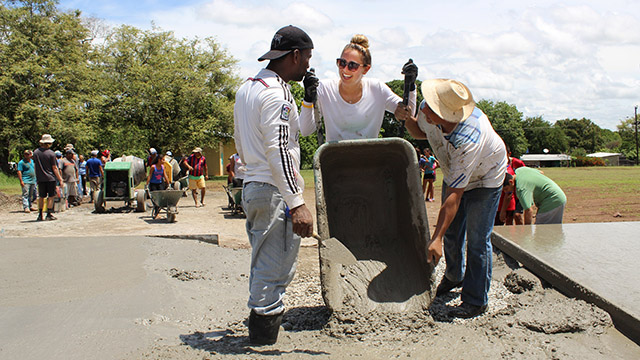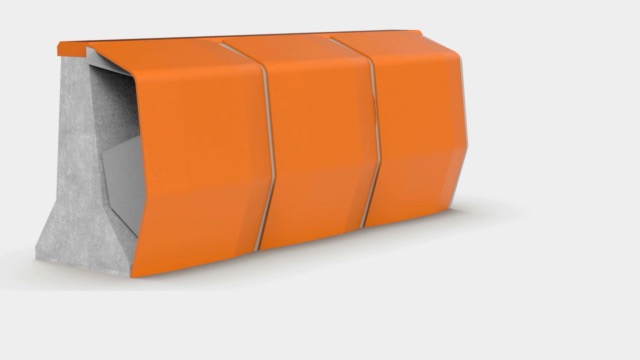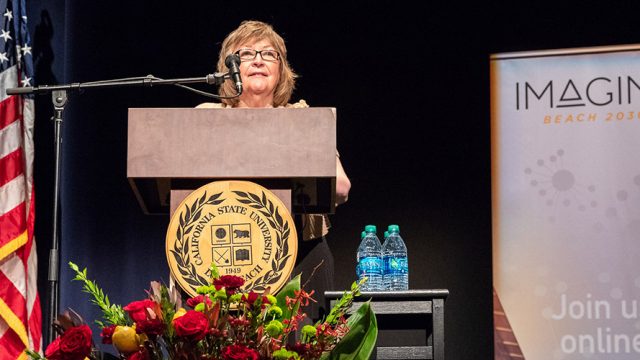Human Nature
It’s in our nature to want to help solve global warming and the effects of climate change. At least that’s what two teams of industrial design students discovered recently when a routine project turned into a global challenge.

Students in the university’s Design Methodology class were asked to come up with nature-based designs that would help the environment that would be entered in the Biomimicry Global Design Challenge.
Two teams of Long Beach State students – Genrail and Phalanx — were among eight winners from around the world that will go on to compete in the 2018-19 Biomimicry Launchpad for a chance at a $100,000 prize called the Ray C. Anderson Foundation Ray of Hope.
Genrail is comprised of Ryan Genena, Chris Sagui, Benjamin Dadacay, Roman Wiant and Matt White. Phalanx Insulation members are Tim Enslow, Jesus Mateo, Emre Arat, Oscar Guerra, Albert Gonzales and Eric Askeland.

Biomimicry is an innovation or product that seeks sustainable solutions by copying nature’s patterns, strategies and elements to help the planet. For that, the students didn’t have to go far.
“We looked at our backyard,” White said.
Members of Genrail came up with a product that could harness the wind that is generated on freeways and convert it into energy. The team drew its inspiration from the hard shell of a cockroach, the structure of a desert snail shell, and the shape of the condor’s wing.
“The creatures we used have evolved into doing amazing feats,” White said. “A desert snail uses high and low-pressure zones to cool itself even in 120-degree temperatures by moving air through its shell.
“The condor wing is a large, yet graceful, form that catches drafts and can use small changes in wind speed to carry momentum with high efficiency, while we looked at crash safety through the lens of a cockroach.”
Genrail is designed to have a small footprint, be highly efficient, and be easy to produce and implement in cities worldwide.
“We want to offset fossil fuel consumption as the world transitions to more clean energy solutions,” White said. “We hope to affect climate change by creating energy with a design that uses minimal production and manufacturing.
Phalanx is an insulation grid on the exterior of buildings designed to reduce the internal temperature without using air conditioning. Intended for buildings in urban coastal regions such as Long Beach, the system would lower temperatures without the use of electricity.
The three-layer system has a wavy pattern and reflective surface inspired by cactus and ants. The air channel layer takes elements of tunnels built by cathedral termites to direct hot air up and out of the system.
The capillary layer was based on features of the Saharan camel and wheat. It can collect the morning dew from the air or underlying water sources to cool.
“We were able to pick out elements and emulate them and build a model of those structural elements,” Askeland said. “Saharan silver ants have microscopic triangular silver hairs that are like a prism and have a metallic look to them and these hairs direct the sunlight like a mirror. That keeps the ants’ internal temperature cool.”
















